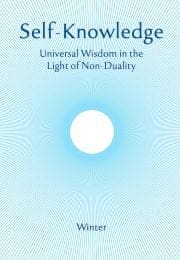In What Sense Is the World Unreal in Shankara’s Philosophy?
Critics of Shri Shankara sometimes say that the practical world, with all its beauty and utility, is treated by him as an illusion, as a mere appearance, having no stuff of reality in it. They base their criticism on a statement which they imagine typifies the non-dual position: ‘Brahman (the Absolute) is real; the world is unreal and nothing but Brahman.’ Thus to many students of Shankara, the world is merely an illusion.
These critics have not understood Shankara’s true meaning. The following is the classification of objects mentioned by him in his commentaries:
1. The objects which are generally referred to by him as ‘the horns of a hare’, ‘a barren woman’s son’, and ‘flowers seen in the sky’. It is the objects in this category that he calls false, non-existent, unreal (asat).
2. The objects such as ‘a rope appearing as a snake’, ‘mother-of-pearl appearing as silver’ and ‘the sky appearing as blue’, are sometimes denoted by him as unreal (asat).
3. The phenomenal objects of the world he designates nama-rupa (name and form), by which he means the changes and modifications in all their diversity which we find in the world.
Shankara says that the objects in the first category, such as ‘the horns of a hare’, have this peculiarity of their nature; they form a separate class from the other two categories. They serve no practical purpose in the world, and he calls them ‘false’, meaning that they have nothing as their substratum, no permanent ground to sustain them: ‘They have no prior cause from which they are produced; neither are these objects sustained at the present moment by any underlying cause or being; again, when these objects disappear, they have no sustaining ground into which they will merge; as they are not true, they are false.’
These conditions do not apply to the objects of the second category. Shankara says we cannot call ‘the snake in the rope’ false in the same way as we call ‘the horns of a hare’ false. He further remarks that the objects of the second category have a substratum: it is the rope which is the substratum of the snake seen in it. When, in the light of correct knowledge, the imagined snake disappears, contrary to the objects in the first category, it disappears in its substratum, the rope.
Now let us see what Shankara has to say about objects in the third category that is, the empirical objects called nama-rupa (name and form). In his commentary on the Chandogya Upanishad, he says that these objects agree in an important respect with the objects described as ‘the snake in the rope’. These changes (to Shankara all empirical phenomena are merely a series of changes), these empirical objects, have a prior cause from which they are produced; during their existence at the present moment, the same identical causal reality underlies and sustains them; and in future also, they will merge in the same underlying ground which now sustains them.
Subscribe or enrol for free guest access to read all of this article and Self-Knowledge online.
Already subscribed or enrolled? Log in:


